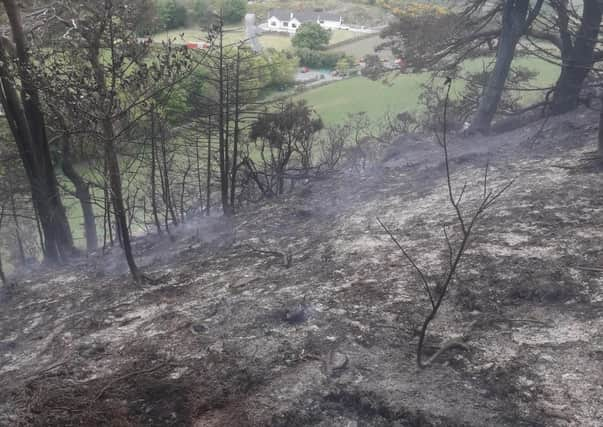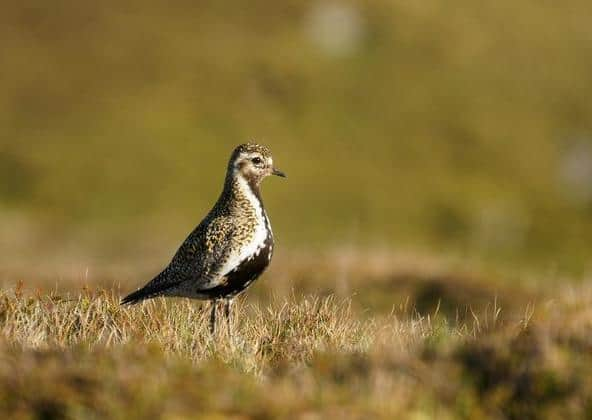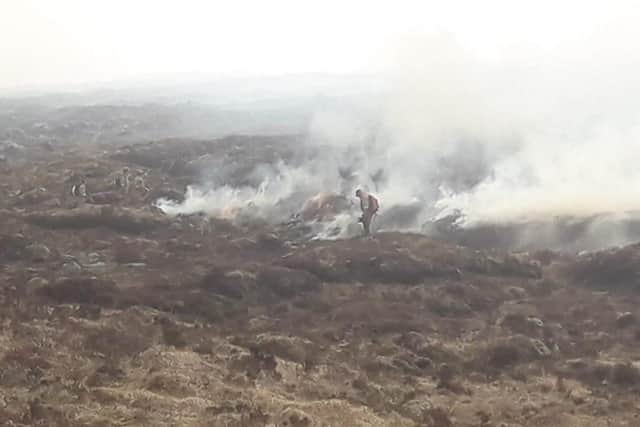Peatland – A burning issue


These have largely been due to the good weather drying up the vegetation and creating a fuel hazard, making malicious or accidental fires much more likely to occur.
At this time, it is worth considering the importance of our peatlands, highlight the damage uncontrolled burning can have and make a plea for support for sustainable management and restoration of peatlands as one of Northern Ireland’s most valuable assets.
Importance of peatlands
Advertisement
Advertisement


Peatlands are a hugely important part of our landscape and natural environment-they cover an estimated 18% of Northern Ireland’s land area ranging from raised bogs pocketed throughout lowland areas, blanket bogs cloaking the uplands, and a wide diversity of fen habitat types. We have a relatively high area of blanket bog/peatland, relative to other agriculturally productive soils so peatlands play an important role in climate regulation. They are an important carbon sink storing carbon better than trees. Peatland is our most stable, long-term land-based carbon storage resource. Peatlands will play a key role in addressing the challenge of climate change.
Bogs and peatlands have a complex and very special ecology as they support a range of highly specific and unique plants, animals and birds. They are a sanctuary for internationally rare and threatened species, important for drinking water, contribute to flood alleviation and store large amounts of carbon.
Peatland landscapes are also culturally significant providing a sense of place and their depths represent an important historical archive stretching back millennia. They underpin a vital hill and upland farming community and culture that is necessary to provide the management required to make peatlands the important environmental asset they are or can be.
Threats to our peatlands


The main components of our peatland vegetation are the Sphagnum mosses that the peat grows from and woody shrubs-mainly heather. As would be expected, after prolonged dry periods, this vegetation becomes a high fire risk, particularly if there had been a build-up of dead grasses and tall, woody heather. Peatlands are more susceptible to wildfire due to poor condition of bogs resulting from drainage or under-grazing.
Advertisement
Advertisement
Many wildfires occurring on our peatlands at this time are deliberate and we would ask farmers and the public to be vigilant. These are creating huge environmental damage that will take many years to recover. An uncontrolled, unexpected fire on peatland can quickly get out of control creating a high temperature burn that destroys much of the fragile and all-important plant cover. In many cases, the very specialist bog species that are lost are replaced by more generalist species that do not have the same impact on bog growth and diversity.
Sadly, most of our peatlands have suffered damage, are in poor condition and require sustainable management and restoration. Much of NI’s peatlands are no longer sequestering and storing carbon due to decades of unsustainable management practices, such as drainage and over- or under- grazing and air pollution. Instead, they have become a significant net source of greenhouse gases. Widespread drainage, historical afforestation and adverse management has resulted in 88% of peatlands in NI showing signs of degradation. Degraded sites are more vulnerable to increasing carbon and biodiversity losses through the higher temperatures and drier summers associated with climate change. Estimates indicate that NI’s degraded peatlands emit 170,500 tonnes of CO2 each year, and 223,200 tonnes of GHGs (in CO2 equivalent) in total. To put this in context, recent estimates by the Agri Food and Biosciences Institute (AFBI) are that agricultural grassland and soils in NI have the potential to sequester 1.2million tonnes of CO2 per year. It is easy to see why we should be very concerned when we hear of yet another peatland fire.
Protection and management of peatlands
The law states that heather burning must not be carried out between 15 April and 31 August and, areas where peat depth exceeds 0.5m and land protected by designation should not be burnt. Burning during the bird nesting season is also an offence under the Wildlife Order 1985 and farmers and the public need to be careful and report any wildfires immediately to the NI Fire and Rescue Service.
As there is currently no Code of Practice in NI, any proposed controlled burning will be considered by NIEA using a similar approach to the Natural England/DEFRA seven-step assessment. However, heathland management should involve a strategic wildfire reduction plan to prevent it getting to a state where burning needs to be considered. There is a clear need for peatland policy developed on a regional basis across the UK post Brexit. This should reflect the fact that peatlands are very variable in form, structure and function across the territory and predictions for climate change are for considerable regional variability. Future policy will clearly need to deliver on greenhouse gas emission offsetting, climate change mitigation, build -up of fire risk, water and flood control regulation and biodiversity conservation and enhancement.
Advertisement
Advertisement
On certain sites, cutting or flailing vegetation on peatland may be an option but this needs to be done with care, ensuring that the moss layer beneath is not mulched and too much trash does not accumulate. Once again, this will not normally be consented on areas where peat depth exceeds 0.5m or in the bird breeding and fledging season.
Most of our most important peatlands have protection under law as they come under designations such as SAC (Special Area of Conservation) and ASSI (Area of Special Scientific Interest). On these areas, burning is prohibited and additional support measures are available for landowners to maintain them in favourable condition and encourage peat growth by carrying out procedures such as sustainable grazing and rewetting by appropriate damming or drain blocking. This positive management also helps reduce fire risk.
From a farmer’s
perspective
Under DAERA’s Basic Payment Scheme (BPS), only land actively farmed is eligible for payment and farmers are required to maintain this land in good environmental and agricultural condition for the forthcoming year. Land burned by wildfire would normally be classified as ineligible for BPS payments until the vegetation recovers. If you have claimed for such areas you should reduce your claim to avoid penalties. If the fire was outside your control, it may be considered as a Force Majeure/Exceptional Circumstances (FM/EC) in certain circumstances and you need to seek an exemption from DAERA. In such cases, it is important that you report any wildfire to the PSNI or NI Fire and Rescue Service and obtain an incident number. This then needs to be reported to DAERA within 15 days of the incident occurring and may be subject to inspection. You are also required to submit an application for FM/EC (Form FML 1) to Area-based Schemes Payment Branch, Orchard House.
Environment Farming Scheme Group Facilitators can provide specialist help and support for existing and new EFS agreement holders in managing this specialist habitat where they join the group. If you are interested in joining this farmer lead programme facilitated by Ulster Wildlife, further information can be obtained by emailing or telephoning Jim McAdam ([email protected]; Tel: 07796614870) or Stephen Duggan [email protected] (Tel: 07739 700793).
From the general public’s perspective
Advertisement
Advertisement
Please show great care when you are out in the countryside-wildfires can start and get out of hand very easily and, from this article you can get some idea of the damage they do to the countryside generally, wildlife particularly and farmer’s livelihoods specifically . With dry weather, we all need to be particularly vigilant. If you see a fire report it immediately to the PSNI or NI Fire and Rescue Service.